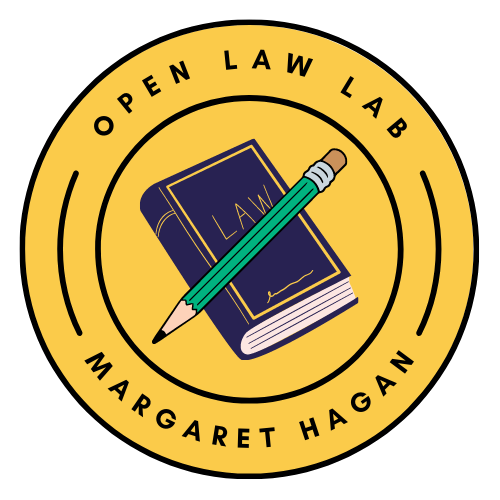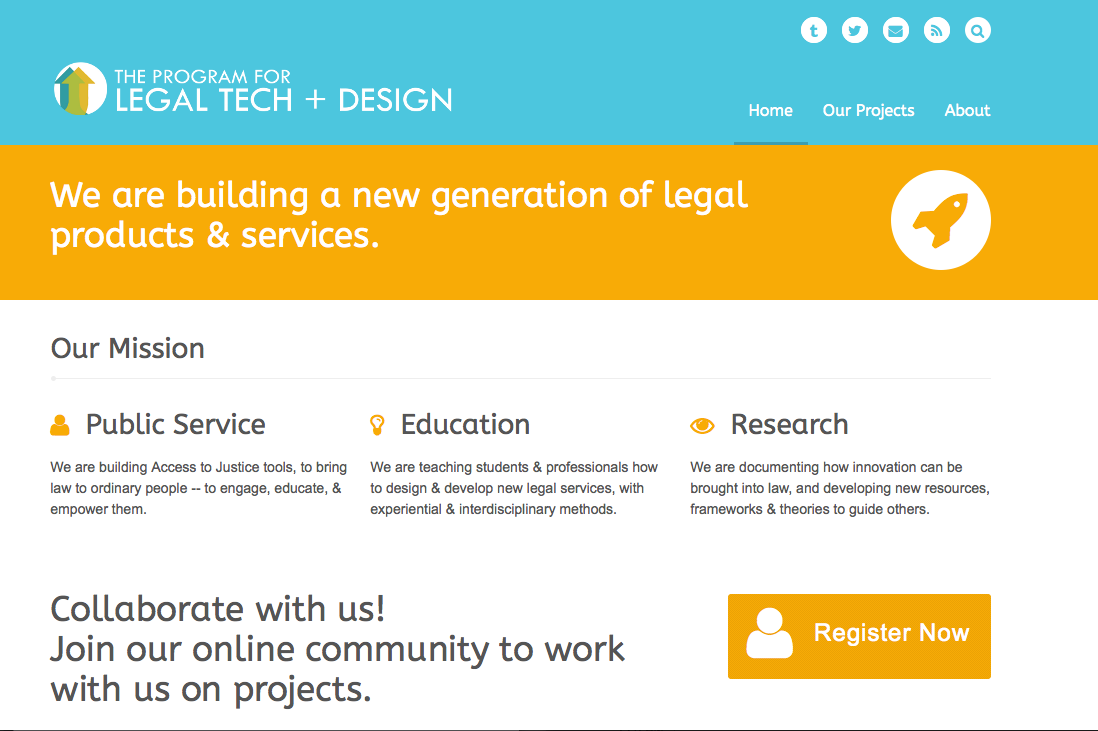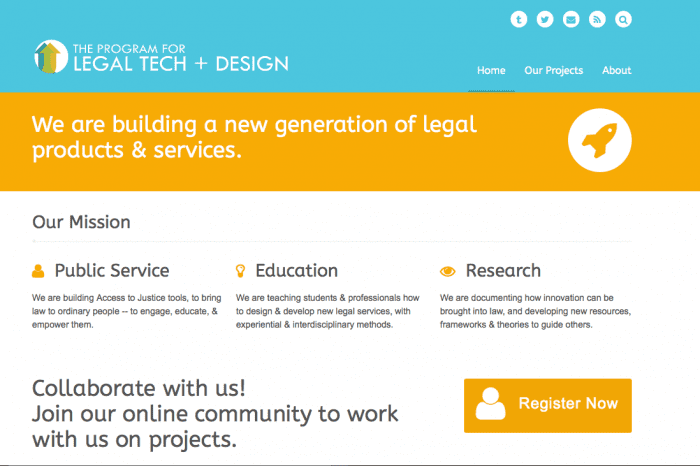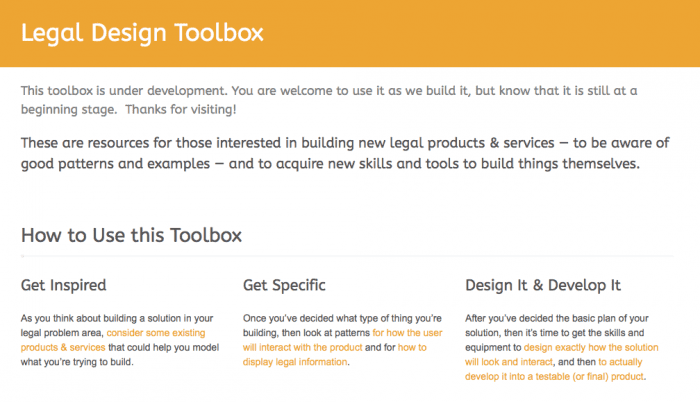I’m excited to announce that Ron Dolin & I have started a new Program for Legal Tech & Design at Stanford. We’re based out of Stanford Institute of Design (d.school) for now, which is where I’m doing my one-year fellowship to bring Law & Design together.
Our goal is to push law forward with innovative research & hands-on projects, and a core mission of improving access to the legal system & the quality of legal services. We want to build new models of legal products, services, and systems, and train others to join us in this work. And we believe that a focus on User-Centered Design, mixed with strong technology and design skills, can guide us in building new legal tools & services that all kinds of people actually *want to use*, in addition to being *useful to them*.
We are taking a very ‘designerly’ approach to creating the Program — build quickly, test quickly, get feedback, and repeat. With that process, we’re launching our first Hands-On-Law design sprint this weekend. About 30 lawyers, technologists, and designers will get oriented to a small area of legal problems over a kick-off dinner, and then spend the full next day forming a project plan, building low-fi and then hi-fi prototypes of their idea, and finally testing and iterating it with target users.
This Hands-On-Law session will be an experiment in how interdisciplinary teams can be formed & facilitated to not only ‘think’ about how legal problems but quickly jump into trying to ‘build’ legal solutions. We don’t expect to have a fully-functional product at the end of Saturday — but we do expect to have concepts that have been fleshed out, wireframed, tested — essentially, ideas with legs to really go somewhere.
Our other initial project is to establish a resource to equip lawyers, law students, paralegals, and others with the tool sets that are necessary to get from a good idea to a viable new legal project. Currently, this resource is the Legal Design Toolbox, where we’ve started gathering together design patterns, elements, instructionals, and tools to help guide people with ideas through the process of design & development.
We welcome you to come visit the site, follow us on Twitter, and join us in our experiments — we’re excited to see where the Program can go, and we welcome collaborators who want to join us!






